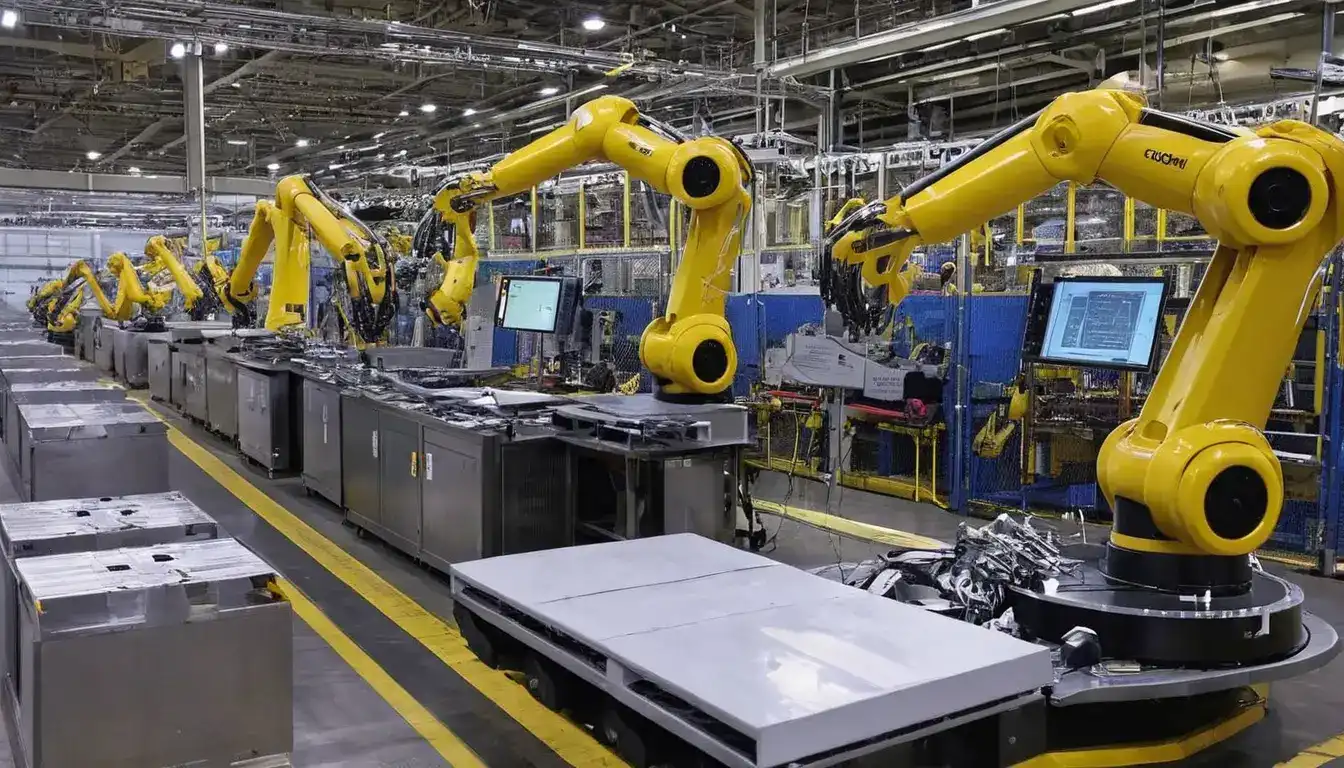Build Resilience: Equip Students for Future
Emily Willis

Photo: Build Resilience: Equip Students for Future
Building Resilience: Equipping Students for a Brighter Future
The world is constantly evolving, presenting new challenges and opportunities. For today's students, navigating this dynamic landscape requires more than just academic knowledge; it demands a robust set of life skills, chief among them resilience. Resilience isn't just about bouncing back from setbacks; it's about growing through challenges, adapting to change, and thriving in the face of adversity. Equipping students with these vital skills is no longer a luxury but a necessity for their future success and well-being.
Why is Resilience More Important Than Ever for Today's Students?
Our children and young adults face a unique set of pressures that previous generations might not have encountered with the same intensity. From academic demands to social complexities and the omnipresent digital world, the need for robust student resilience has never been more evident.
The Ever-Changing World: Navigating Uncertainty
Think about the rapid advancements in technology, the shifts in global economies, and the increasing complexity of societal issues. Today's students will enter a workforce and a world that are fundamentally different from what we know. They need to be adaptable, innovative, and capable of navigating unforeseen circumstances. Building resilience in students prepares them for these inevitable uncertainties, teaching them to see change not as a threat, but as an opportunity for growth and learning. They'll need to pivot, learn new skills, and approach problems with a flexible mindset.
Academic Pressures and Social Challenges
The pressure to perform academically often starts early, leading to stress and anxiety. Coupled with the intricate social dynamics of school life, peer pressure, and the pervasive influence of social media, students can feel overwhelmed. Cyberbullying, body image issues, and the constant comparison trap can chip away at self-esteem. Fostering resilience in students helps them develop healthy coping mechanisms, stand firm in their values, and manage the emotional rollercoaster that often accompanies their formative years. It teaches them to seek support, set boundaries, and understand that their worth isn't defined by grades or likes.
Mental Well-being: A Growing Concern
Alarmingly, mental health challenges among young people are on the rise. Anxiety, depression, and stress are increasingly common. While various factors contribute to this trend, a lack of coping skills and emotional regulation can exacerbate these issues. By focusing on building resilience, we empower students with the tools to understand their emotions, manage stress effectively, and develop a positive outlook even when things get tough. This proactive approach to mental well-being is crucial for preventing more severe issues down the line and for ensuring students can lead fulfilling lives.
What Exactly is Student Resilience?
Often, when we talk about resilience, we picture someone tough, unyielding. But true student resilience is far more nuanced and compassionate. It's not about avoiding pain or difficulty, but about navigating it effectively and emerging stronger.
Beyond Bouncing Back: Key Components of Resilience
Resilience is a dynamic process, not a fixed trait. It involves a combination of factors that allow individuals to adapt well in the face of adversity. For students, these key components include:
- Emotional Regulation: The ability to understand and manage one's emotions, rather than being overwhelmed by them. This includes recognizing feelings like frustration, sadness, or anger and choosing healthy ways to respond.
- Problem-Solving Skills: Approaching challenges systematically, identifying solutions, and taking action. This involves critical thinking and the ability to break down complex issues into manageable parts.
- Self-Efficacy: A belief in one's own capability to succeed in specific situations or accomplish a task. When students believe they can overcome obstacles, they are more likely to try.
- Positive Self-Perception: A realistic yet optimistic view of oneself, including strengths and areas for growth. This is about self-acceptance and understanding that making mistakes is part of learning.
- Strong Relationships: Having supportive connections with family, friends, teachers, and mentors. These relationships provide a safety net and a source of encouragement.
- Adaptability: The capacity to adjust to new conditions and situations with flexibility. This means being open to new ideas and approaches when initial plans don't work out.
The Role of a Growth Mindset
A cornerstone of building resilience in students is cultivating a growth mindset. Coined by Dr. Carol Dweck, a growth mindset is the belief that abilities and intelligence can be developed through dedication and hard work. In contrast, a fixed mindset assumes these traits are inherent and unchangeable.
- Fixed Mindset: "I'm not good at math." (Gives up easily)
- Growth Mindset: "Math is challenging, but if I practice and get help, I can improve." (Persists through difficulty)
When students adopt a growth mindset, they view challenges as opportunities for learning and improvement, rather than insurmountable barriers. This shift in perspective is incredibly powerful for equipping students for the future, as it encourages perseverance and a love for lifelong learning.
Practical Strategies to Build Resilience in Students
So, how do we actively cultivate these invaluable traits in our young people? It's a collaborative effort involving parents, educators, and the wider community. Here are actionable strategies to foster student resilience:
Fostering Emotional Intelligence and Self-Awareness
Helping students understand and manage their emotions is foundational.
Latest ✨
View AllDitch stressful tests! Gamified assessment makes evaluations fun, fair & future-ready. Unlock true potential with engaging, insightful methods.
Emily Willis
secrets to mastering your business financial plan with five simple steps. Learn how to analyze financial data, set measurable goals, and create a comprehensive strategy for success. Unlock profitability, make confident decisions, and ensure a bright future for your business
Emily Willis
Europe is full of rich culture, with ten cities offering enriching cultural experiences. From the romance of Paris to the splendor of Rome and the artistic flair of Barcelona, each city has its own unique charm and heritage.
Emily Willis
invitation to go on a wildlife safari through Kenya, Tanzania, and Australia. It describes the unique wildlife encounters in each country, such as witnessing the Great Migration in Kenya, exploring the Serengeti in Tanzania, and encountering koalas and kangaroos in Australia.
Emily Willis
Business
View All
June 9, 2025
Innovation Strategy for Future BusinessInnovation is vital for future business success. Learn why a robust strategy ensures survival, growth, and competitiveness in a changing world.
Emily Willis

June 8, 2025
Importance of Corporate GovernanceCorporate governance isn't just for boardrooms. Understand its vital role in ethical business, trust, and sustainable growth for all stakeholders.
Emily Willis

June 9, 2025
Succeed with SaaS Business ModelMaster the SaaS business model! This guide reveals strategies for building a thriving enterprise, from understanding the landscape to achieving product-market f...
Emily Willis
Economy
View AllUnpack the immense power of central banks and how they're held accountable for shaping the economy and your financial life.
Read MoreTechnology is now an integral part of our daily lives and economies, driving innovation, boosting productivity, and fueling economic growth. It streamlines research and development, facilitates collaboration, automates mundane tasks, and democratizes innovation.
Read MoreThe inflation threat explained. Understand its causes and discover effective cures to protect your purchasing power and navigate economic challenges.
Read MoreEntertainment
View All
August 5, 2024
Classic Films: Timeless Masterpieces in the Age of StreamingClassic films may seem outdated in today's world of instant gratification and endless streaming options, but they offer enduring stories, masterful storytelling, historical insights, technical innovation, and artistic value that surpass modern offerings. While classic films face challenges such as accessibility and pacing, there are ways to overcome these obstacles, such as using streaming services, visiting local libraries, attending film festivals, and utilizing online resources.
Emily Willis

August 4, 2024
The Latest Music Trends, Artists Influencing Pop Culture, and How Digital Platforms Facilitate the Distribution of Music GloballyThe music industry is constantly changing due to consumer preferences, technology, and the influence of artists. Digital platforms have revolutionized music creation, distribution, and consumption, leading to genre fusion, the rise of independent artists, and collaborative projects. Influential artists like Billie Eilish, BTS, and Taylor Swift have shaped pop culture globally. Streaming services, social media, and direct-to-fan engagement have transformed music distribution. Digital platforms also promote cultural diversity and inclusivity, expand markets and revenue, and drive technological advancements. The industry is also focusing on sustainability and ethical practices. To succeed in the future, stakeholders must embrace digital transformation and champion inclusivity.
Emily Willis

August 5, 2024
Entertainment in Society: Social Impact, Cultural Influence, Economic ContributionsEntertainment is more than just a way to pass the time it has a significant impact on society, culture, and the economy. It promotes empathy, sparks conversations, and drives social change. It reflects and shapes cultural trends, while also preserving traditions. The entertainment industry generates jobs, contributes to economic growth, and drives technological innovation.
Emily Willis
Health
View AllRegular exercise is essential for maintaining both physical and mental health. It helps with weight management, cardiovascular health, muscle strength, energy levels, and sleep quality. Exercise also reduces stress and anxiety, improves mood, cognitive function, and self-esteem, and lowers the risk of depression. Different types of exercises, such as aerobic, strength training, flexibility, balance, and mind-body exercises, contribute to overall health. To start and maintain an exercise routine, it is important to start slowly, set realistic goals, find enjoyable activities, stay consistent, and listen to your body.
Emily Willis
Maintaining good health involves a balanced diet that provides essential nutrients for the body. A balanced diet includes carbohydrates, proteins, fats, vitamins, minerals, fiber, and water. Benefits of a balanced diet include enhanced energy levels, improved mental health, a stronger immune system, better weight management, reduced risk of chronic diseases, and enhanced digestion. Components of a balanced diet include fruits and vegetables, whole grains, protein sources, dairy or dairy alternatives, and healthy fats. Tips for maintaining a balanced diet include planning meals, portion control, staying hydrated, limiting processed foods, eating mindfully, and including physical activity.
Emily Willis
sleep for physical and mental well-being, discussing the benefits of sleep such as physical restoration, brain function, emotional regulation, concentration, and reduced risk of chronic diseases. It explains the different stages of the sleep cycle and provides guidelines for how much sleep individuals of different ages need.
Emily Willis
Trending 🔥
View All
1
2
3
4
5
6
7
8
9
10
Sports
View AllAugust 5, 2024
Celebrating Sports Legends: Honoring Iconic Figures and Their Enduring Impact
Read MoreAugust 4, 2024
The Importance of Mental Training and Psychological Strategies in Helping Athletes Reach Their Peak Performance on the Field
Read MoreTechnology
View All
August 4, 2024
AI-Powered Robots Take Over Manufacturing Jobs: Is Our Workforce Prepared?
AI-powered robots are transforming the manufacturing industry, leading to increased efficiency and improved product quality. While concerns about job displacement exist, AI is more likely to transform jobs rather than eliminate them.

August 5, 2024
Challenges and Opportunities in Implementing IoT Technology
The Internet of Things (IoT) is revolutionizing industries by enabling real-time monitoring, automation, and decision-making. However, implementing IoT technology comes with challenges such as security concerns, interoperability issues, data management, scalability, and cost. Despite these challenges, IoT offers opportunities for operational efficiency, enhanced customer experience, innovation, environmental sustainability, and business intelligence.

August 5, 2024
Tips for Keeping Your Personal Data Safe on the Internet
The digital age has made personal data more vulnerable to threats such as phishing, hacking, identity theft, and data breaches. To protect yourself, it is important to create strong passwords, be cautious of phishing attacks, secure your devices, safeguard your personal information online, practice safe online shopping and banking, protect your social media accounts, and stay informed about cybersecurity threats.

August 5, 2024
The Future of Cybersecurity and Upcoming Challenges
cybersecurity in the digital age, highlighting key trends and challenges that will shape the future of cybersecurity. It addresses issues such as the increased use of AI and ML, the growth of IoT devices, ransomware attacks, cloud security, and supply chain attacks. It also outlines upcoming challenges in cybersecurity, including talent shortage, regulatory compliance, cybersecurity for remote work, quantum computing, and social engineering attacks.





















